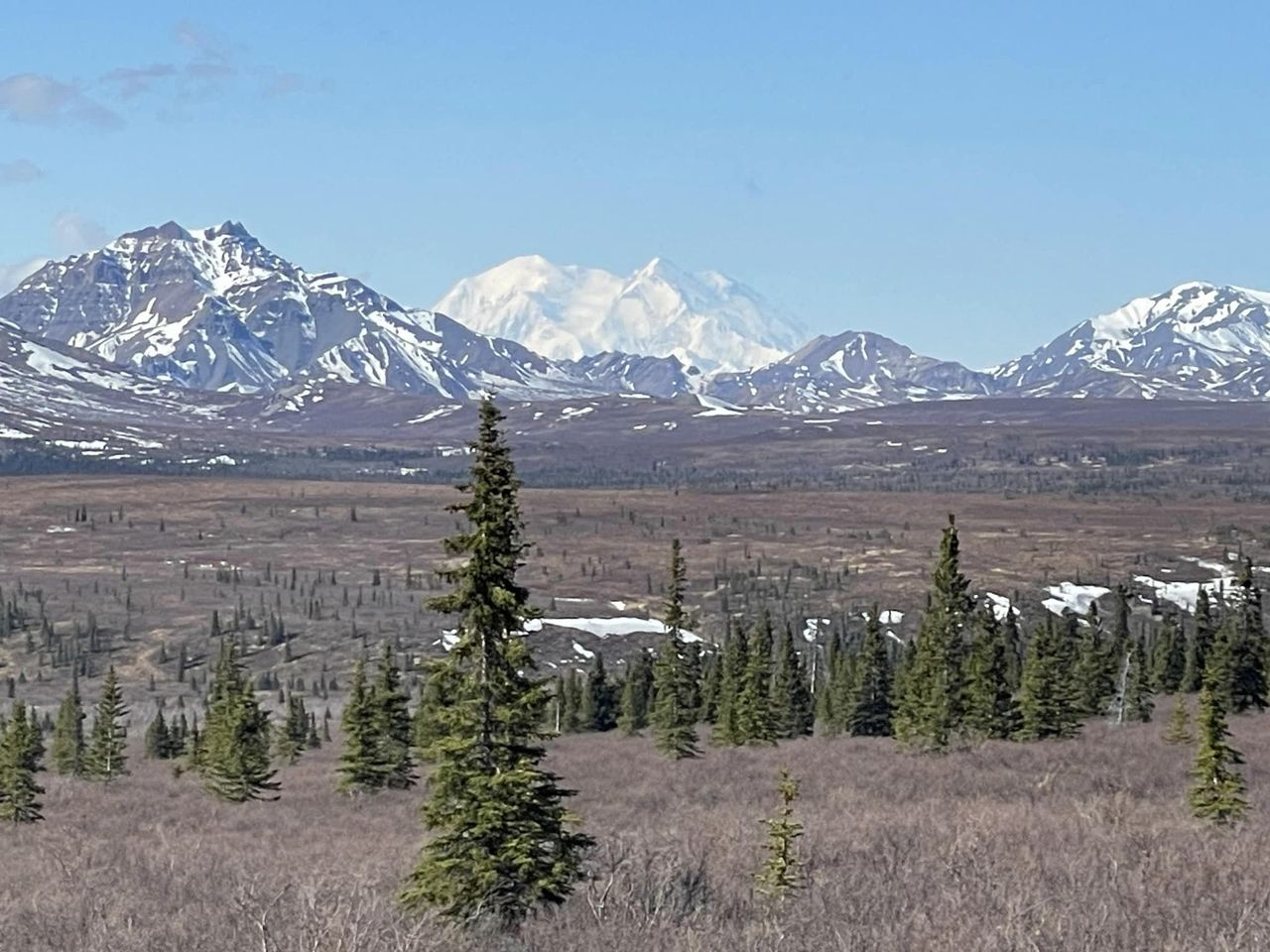MAY 29, 2024 – My wife recently returned from a three-week sojourn in The Last Frontier—Alaska, a name derived from Aleut-language meaning, the “mainland” or more expanded idiomatic form, the “object toward which the action of the sea is directed.”
She was not on a cruise, which is vantage point of most Lower 48 American visitors to the state. Instead, she traveled with Sue, her long-time friend from school-teaching days, and more recently, hiking partner and fellow birder. Sue has a brother and sister-in-law—transplants from Michigan—who’ve lived in Alaska for several decades and whom Sue has visited on numerous occasions during that time. After Sue’s husband died a few years ago, she went up to Alaska to live and teach for a few months in the native village of Fort Yukon, 138 miles northeast of Fairbanks, and resting on the Arctic Circle. She was the perfect tour guide.
I remember overhearing the two women on the phone over the past several months, plotting their route, modes of transportation, and places of accommodation. The trip was a veritable expedition to “parts unknown”—at least unknown to me, since I’ve never set foot in the state or laid eyes upon it.
The intrepid sojourners covered vast stretches of land and water, and Beth filed regular text, email, and telephonic reports. Each day, it seemed, her photographs grew more spectacular, and she was immensely pleased with the weather gods, especially when it really counted: in Denali National Park south of Fairbanks. Only around 30% of visitors to the park get to see Denali—(formerly, Mount McKinley)—at 20,310 feet, the highest peak in North America. Most of the time, the mountain has its head in the clouds. Beth and Sue, however, saw Denali in the very clearest possible conditions.
Even vicariously, I was awestruck by Alaska’s unveiled beauty—glaciers meeting seawater, boreal forests emerging from the mist, a grizzly bear lumbering by[1], bird havens atop island cliffs, whales fluking, and sea otters at play.
What impressed Beth most about Alaska, however, was the sheer vastness of the place. Not until she and Sue flew over uncharted regions of uninhabited wilderness did Beth understand psychologically just how huge a place it is. The eight-seater aircraft that the travelers took from Fairbanks to Fort Yukon provided a splendid view of “The Last Frontier.” When I pulled out an old-fashioned National Geographic Atlas to track that part of their journey, I naturally wandered off to other corners of the state and saw how few communities exist beyond the southern coast and panhandle.
Intrigued by the pictures and descriptions that were being transmitted home, I studied materials about the territory that in 1959 became our 49th state; the enormous land that in 1867 Secretary of State William Seward had negotiated to buy from Russia under Tsar Alexander II for $7.2 million. One fact that stood out: Alaska has three million lakes—compared to Minnesota, the “Land of [only] 10,000 Lakes.” Another astonishing comparison: If superimposed on a map of the continental U.S., the straight-line distance from the outermost of Aleutian Islands to Ketchikan is the same as from San Francisco to Jacksonville. The total land area of Alaska is greater than the combination of Texas, California, and Montana, which are the next three biggest states.
Yes, “Ketchikan,” or “Catch me if you can,” as I think of it, the southernmost community in Alaska; yet when Beth and Sue boarded a ferry there (after flying from Anchorage with a stop in Juneau), it would take them two days to reach Bellingham, Washington, just barely south of the Canadian border.
Why, I wondered, had I myself misgauged the size of Alaska? As I checked back with the atlas, I saw the problem: To fit Alaska onto the page of any atlas—or to view the state in its entirety on the screen of any digital device—The Last Frontier has to be reduced, disproportionately to all the other states. You could call it cartographical “short-changing”—ironic for a gargantuan state that built its early reputation on the Klondike Gold Rush of 1898.
Subscribe to this blog and receive notifications of new posts by email.
© 2024 by Eric Nilsson
[1] Grizzly!


2 Comments
Eric, What a Wonderful writer you are!
Thank you, Connie.